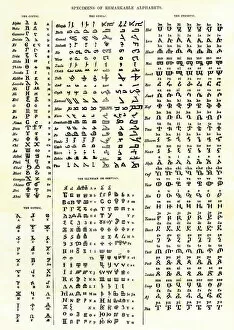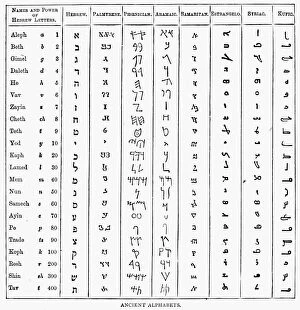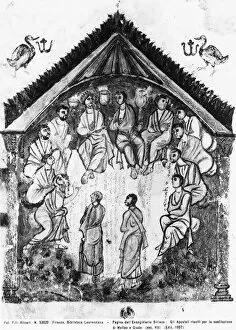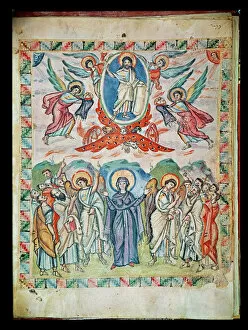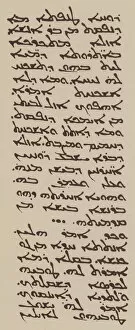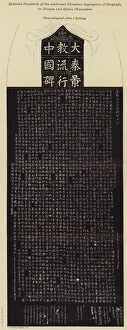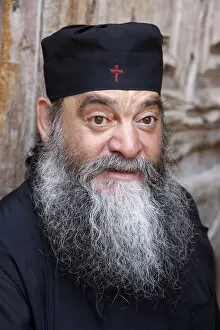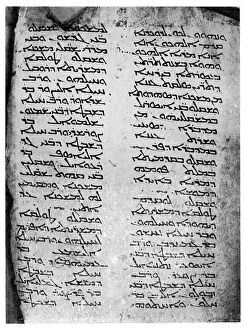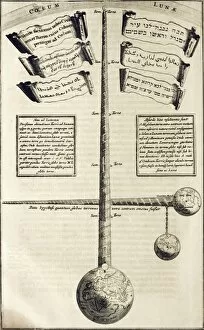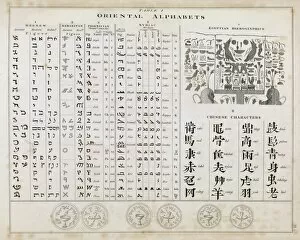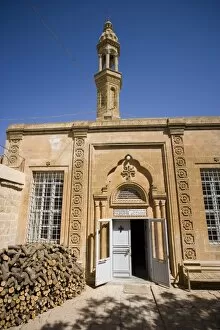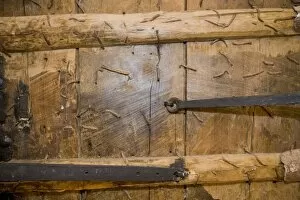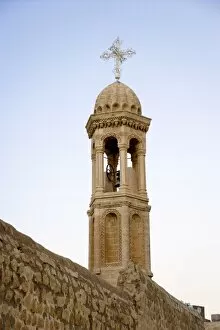Syriac Collection
Syriac, an ancient language with a rich history and cultural significance, is beautifully depicted in various forms of art and literature
For sale as Licensed Images
Choose your image, Select your licence and Download the media
Syriac, an ancient language with a rich history and cultural significance, is beautifully depicted in various forms of art and literature. The chart of early alphabets showcases the evolution and development of this unique script over time. From the table of ancient written alphabets, we can see how Syriac stands out as one of the oldest known scripts. The Rabula Gospels, created in 586 AD, provide us with stunning examples artwork on vellum. One folio depicts the gathering of apostles to replace Judas by Matthias, while another portrays the descent of the Holy Spirit. These intricate tempera paintings not only showcase religious scenes but also highlight the artistic prowess prevalent during that era. Amongst these pages lies a depiction of Christ among doctors, emphasizing Syriac's role in spreading Christianity throughout Mesopotamia. The litho prints displaying both Old and New Testaments further exemplify its importance as a sacred language for Christian communities. Elias, a Jacobite Priest from Mesopotamia, represents one individual who dedicated his life to preserving and promoting Syriac culture. His influence serves as a testament to the enduring legacy carried by this ancient language. Even beyond its native land, Syriac found itself intertwined with other cultures like China through inscriptions such as Singanfu's celebrated Christian inscription. This fusion highlights how languages transcend borders and connect diverse societies. In addition to textual works, exquisite illustrations like Madonna and Child grace these historical texts—testimony to both religious devotion and artistic excellence present within Syriac culture. Lastly, canon tables from Rabula Gospels demonstrate meticulous attention to detail while organizing biblical passages—a reflection not just on linguistic skill but also on intellectual depth possessed by those who worked with this script centuries ago.

